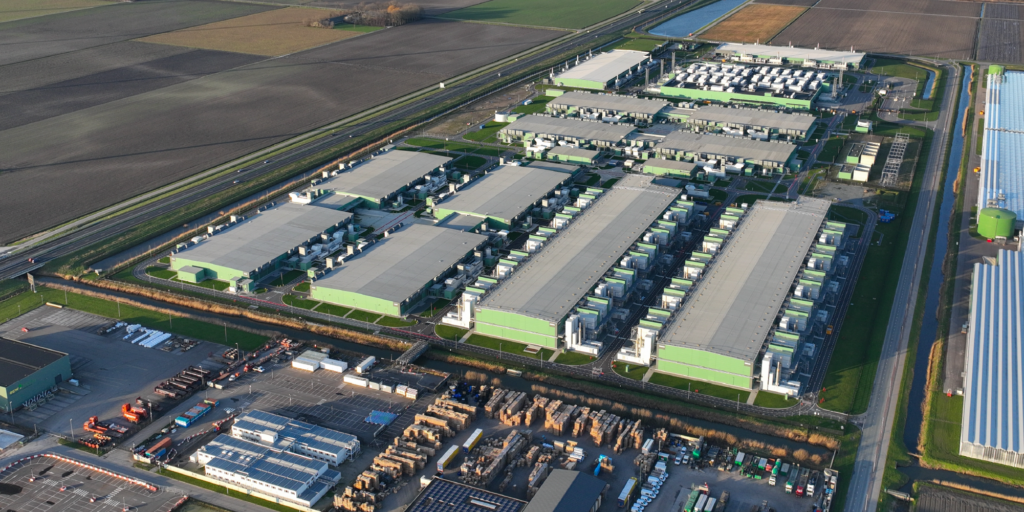— 8 min read
Workforce Scheduling in Construction: 8 Tips To Improve Labour Productivity
Last Updated Jan 13, 2025
Last Updated Jan 13, 2025

Proper scheduling of construction labour and resources can result in increased productivity, lower costs, and improved timelines, allowing for successful project completion. By understanding a project’s requirements, assessing the resources needed, and properly allocating labour hours, construction businesses will be able to ensure their workforce is effectively scheduled to maximise efficiency and minimise cost.
According to the Australian Bureau of Statistics, there were over 1.3 million people employed in the construction industry as of August 2023, and the industry continues to grow steadily.
With over 1 million workers in construction companies across Australia, effective workforce scheduling is essential because it helps ensure that the right people with the right skills are available at the right time and place to complete the work. Proper scheduling enables construction companies to optimise their workforce, reduce costs, and improve project timelines.
Here is how you can optimise your workforce scheduling by rerouting processes into a more efficient route.
Table of contents
1. Assess project needs.
Before creating a workforce schedule for a construction project, you must have an understanding of all project requirements. It is important to consider all aspects of the project, such as required labour hours, materials, skills, and other factors.
This involves identifying the specific skills necessary for successful completion and accurately estimating labour hours needed for the project. It also requires assessing external factors such as weather conditions that could affect resource availability, as well as any potential hazards or legal restrictions that must be considered before creating a schedule.
Once these considerations have been taken into account, it is important to properly allocate resources and create an efficient scheduling plan.
This will help you determine how much time and resources are necessary to complete the project on time and within budget.
2. Understand your workforce.
Workforce availability, preferences, and skills are key factors that can help optimise workforce scheduling in any industry, including the construction industry.
It is important to evaluate each employee’s qualifications, preferences and workload in order to ensure that they are properly matched with the projects they will be completing.
By evaluating your staff’s qualifications and preferences, your construction company can assign workers to tasks that align with their skills, experience, and preferences, which can improve productivity and job satisfaction.
This evaluation should take into account your workforce’s individual strengths and abilities as well as their preferred working hours, and should provide guidance on how best to utilise them and schedule within the team.
3. Choose the right programming tools.
The best way to collect, analyse, and store all of this information is with workforce scheduling software and tools designed for the construction industry's unique needs.
These tools help contractors track staff availability, qualifications, and preferences, making it easier to assign tasks and schedule shifts. They can also help to streamline project management processes by providing detailed information on labour resources and timelines.
They allow for better communication between teams and customers, as well as improved accuracy when it comes to budgeting for projects. Construction scheduling software can reduce costs associated with delays and errors due to manual scheduling methods.
It’s no wonder that the use of construction scheduling software is becoming increasingly popular among construction businesses in Australia. This software helps to streamline project management processes by providing detailed information at any given time.
Here are some factors to consider when choosing scheduling software:
- Features: Choose scheduling software that has features specific to your needs. This will likely include features such as resource allocation, time tracking, and project management tools.
- User-friendliness: Choose scheduling software that is easy to use and intuitive for your employees. Consider scheduling software that offers a user-friendly interface and can be accessed from any device.
- Integration with other tools: Choose scheduling software that can integrate with other tools, such as accounting software or project management software, to streamline your workflow.
4. Develop a realistic, achievable workforce schedule.
Developing a realistic, efficient, and achievable construction workforce schedule requires careful planning and consideration of various factors. Scheduling software helps you automate many of the scheduling tasks, track progress in real-time, and make adjustments as necessary.
With the command centre at your fingertips, here are the best ways to create and maintain excellent programmes. The first step in developing a realistic construction workforce schedule is to create a realistic timeline.
Consider factors such as the size and complexity of the project, the availability of your workers and resources, and any potential delays or setbacks. Use historical data from scheduling software and experience to estimate how long each task will take, and allocate enough time for each task to be completed.
Next, prioritise tasks based on their importance and the critical path of the project. Critical path tasks are those that must be completed before other tasks can begin. By prioritising critical path tasks, construction companies can ensure that the project stays on track and that resources are allocated efficiently.
And of course, keep an open line of communication with all members of your team.
5. Communicate with your team.
Proper communication is crucial for improving construction workforce scheduling. By keeping the team informed about the schedule, construction companies can ensure that everyone is on the same page and working towards the same goals.
Scheduling software that allows you to easily share the schedule with your team ensures that everyone has access to the most up-to-date version of the schedule and can plan their work accordingly. You can also provide regular updates on the progress of the project and the schedule. This helps to keep the team engaged and motivated, while also ensuring that everyone is aware of any changes or adjustments to the schedule.
You can also use visual aids such as charts, graphs, and timelines to help communicate the schedule and any changes that may have occurred. This helps to make the information more accessible and understandable for the team.
6. Monitor progress.
Monitoring progress and tracking performance are essential aspects of construction workforce scheduling to ensure that projects stay on track and within budget.
Without monitoring and tracking, it can be challenging to identify potential problems or delays that may affect the completion of the project. Therefore, it is crucial to emphasise the importance of these activities to project managers and construction teams.
One way to track progress is by using Key Performance Indicators (KPIs). KPIs are measurable values that indicate how well a project is progressing towards its goals.
Some common KPIs in construction projects include cost performance index (CPI), schedule performance index (SPI), and percent complete.
7. Adjust to changes and delays.
Construction projects are often subject to unexpected changes that can impact the workforce schedule. Unexpected changes like this can cause a disruption in the workforce schedule.
These changes can range from weather-related delays to supply-chain disruptions to unforeseen design changes. It’s essential to have a plan in place to handle these changes and adapt the workforce schedule.
Flexibility is key when it comes to adapting the workforce schedule to unexpected changes.
In order to deal with these changes effectively, it's important to have contingency plans in place and be prepared to adjust the schedule accordingly. The plan should include a list of potential risks and their impact on the project schedule, as well as strategies for mitigating those risks.
For example, if the weather is a potential risk, the plan could include a contingency for working overtime to make up lost time or shifting work to an indoor location.
8. Evaluate results.
Evaluating the success of your construction workforce scheduling plan and identifying areas for improvement are crucial for ensuring the efficient and effective use of resources, increasing productivity, and delivering projects on time and within budget.
When it comes to post-project evaluations and feedback, it’s important to review the entire process from start to finish. This includes looking at timelines, labour resources used, materials used, and any unexpected delays or issues that may have occurred during the project.
By analysing data and soliciting feedback from team members, you can identify areas where your scheduling plan was successful and areas where it fell short. This information can help you make necessary changes and adjustments for future projects, leading to more successful outcomes.
It’s also important to analyse data from previous projects. Looking at historical data such as labour costs, materials used, and hours worked by team members can help pinpoint any inefficiencies or areas where adjustments may need to be made in order for future projects to proceed more smoothly.
Optimal Workforce Scheduling is a Continuous Process
Long work hours are common in the construction industry, and coordinating mismatched schedules only adds to your tedious list of admin work.
Streamlining labour planning by using software to proactively plan ahead will help keep projects productive and on schedule by hiring and scheduling the right people for the right jobs at the right time.
To do this, you need real-time and comprehensive insight into your workforce’s availability, current project requirements, and past project data, as well as the means to keep on top of schedule changes or unpredictable site conditions.
Categories:
Tags:
Written by
Nick Zajac
Nick is a Strategic Product Consultant at Procore, he leverages his industry experience to guide clients in optimising Procore, for streamlined project management and enhanced productivity. He has a background in construction and property development, predominately as a Project Manager. Nick has successfully overseen numerous projects within different sectors including high-density residential, mixed-use, commercial and healthcare, demonstrating keen attention to detail and project efficiency.
View profileExplore more helpful resources

Construction Handover: The Keys to a Smooth and Successful Transition
Project handover should be a seamless transition, but its success is determined long before the last walkthrough. When teams consistently align on design, timelines, and quality, and support that alignment...

Cutting Delays and Costs: Proven Ways to Boost Construction Site Efficiency
On-site efficiency separates profitable construction projects from those plagued by delays and budget overruns. In Australia’s construction landscape—where supply chain disruptions, skilled labour shortages, and increasingly strict regulations are the...

Why Communication is the Hidden Risk Factor in Construction
Construction is a high-risk industry—not just financially, but physically and reputationally. While significant effort goes into mitigating physical hazards, ensuring financial control, and protecting contractual interests, one of the biggest...

Data Centre Construction: Building the Cloud
As the demand for digital data increases, so does the demand for the physical structures and equipment needed to store and process data. Data centres are facilities that house computer systems...